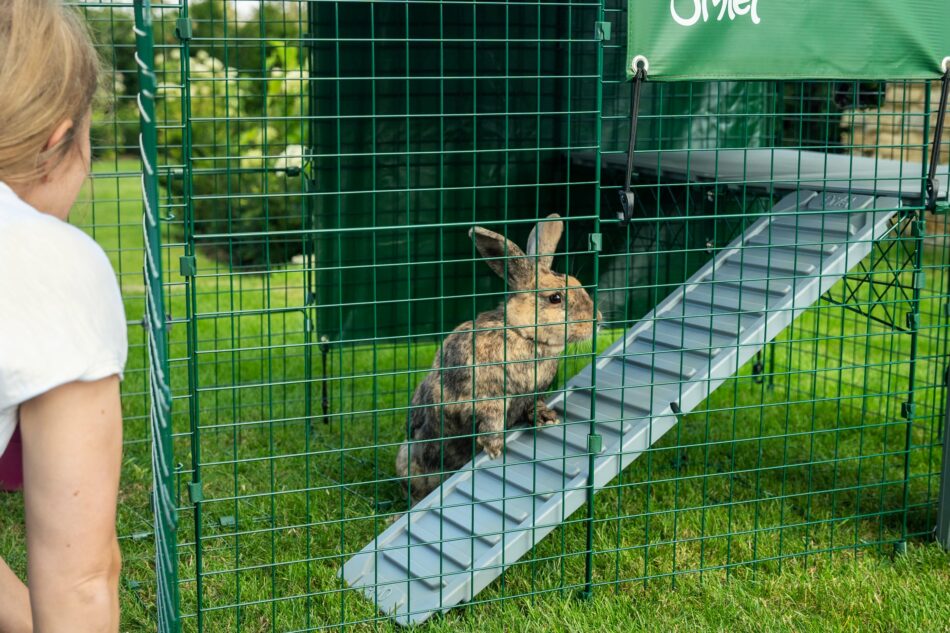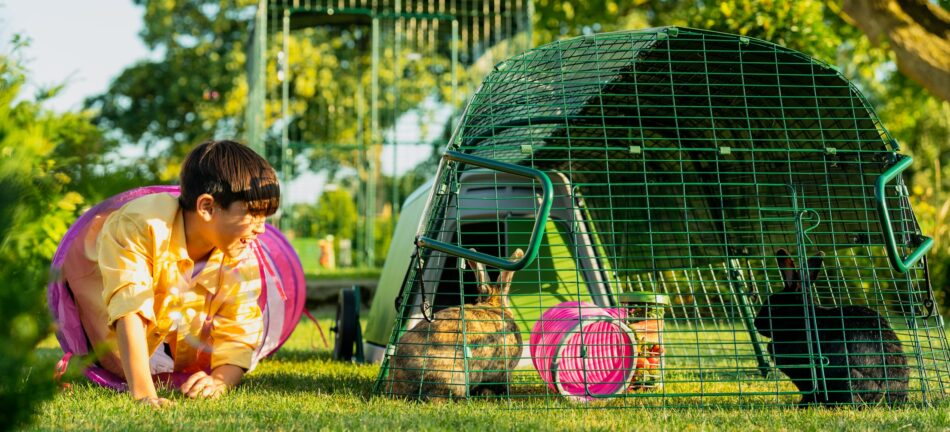How rabbits decide who’s boss
Behind the twitching noses and soft expressions of rabbits lies a surprisingly structured social system. Because they’re social animals, bunnies thrive best when living in pairs or groups. But with more than one rabbit in the mix, you’ll quickly see a hierarchy take form. Understanding how rabbits decide who’s boss will help you interpret their behaviour, support healthy bonds, and step in when needed.
Why rabbits have a hierarchy
In the wild, rabbits live in large warrens with many individuals. To keep the peace in such close quarters, they rely on a clear hierarchy. This order establishes dominant rabbits as the first in line for resources like food and shelter, and helps submissive rabbits understand their place, which reduces the risk of constant conflict. When a healthy hierarchy is in place, the whole group can coexist peacefully.
Domesticated rabbits are no different. Even in your backyard rabbit setup or indoor enclosure, bunnies will establish a pecking order among themselves. Knowing how to tell who the dominant and submissive members are and making sure there’s plenty of rabbit enrichment will help you maintain the peace.
Signs of dominance
A dominant rabbit will usually make its position clear through a mix of bunny body language and behaviours like:
- Mounting — Not always a mating gesture; it’s a way to show dominance over another rabbit. Both males and females will mount other rabbits of either gender until the hierarchy is established.
- Nudging or chasing — Used to move submissive rabbits out of the way. Sometimes chasing manifests as circling, and shouldn’t result in stress or injury.
- Resource guarding — Blocking access to food bowls, hay feeders, or favourite hideouts. This shouldn’t be persistent, just a dominant rabbit staking their claim as first in the desired activity.
- Demanding grooming — Lowering their head expectantly for attention from others. This “bowing” may be met with another bow from the other rabbit until the hierarchy is firmly established.
These are normal parts of establishing hierarchy, but they should settle into routine rather than remain constant.
Signs of submission
The flip side of dominance is submission, and it’s just as important for keeping the peace. A submissive rabbit may:
- Groom the dominant rabbit as a show of respect. The rabbit doing the grooming is acknowledging the elevated position of the other rabbit, and is accepting their place lower in the hierarchy.
- Lay low with ears back to avoid confrontation. This “flattening” is in response to a rabbit feeling threatened by another, and it will usually diffuse tension right away.
- Move away when challenged instead of fighting. Passive behaviours are a sure way to tell which of your rabbits are more submissive.
Recognising these behaviours reassures you that your rabbits are negotiating boundaries rather than escalating into real conflict.
How the hierarchy is established
When rabbits first meet, or when an established pair goes through changes, the hierarchy must be worked out. During periods of change, or when introducing new rabbits, you can expect to see mild scuffles like quick “boxing” matches or brief chases. You may also see nose-to-nose standoffs until one rabbit backs down. And, most commonly, you’ll notice mounting and chasing until the roles are accepted.
This process can look dramatic, but it’s usually short-lived. The important thing to remember is that dominance isn’t always permanent. It can shift later due to age, health, or personality changes. Keep an eye on your rabbits to make sure all transitions and shifts remain safe.
Healthy vs. problematic behaviour
While it’s normal to see chasing, nudging, and mounting during normal bonding and hierarchy restructuring, there’s a line between healthy dominance and problematic aggression. Here are some warning signs to watch out for:
- Persistent bullying of the same rabbit.
- Fur pulling or biting that draws blood.
- One rabbit being isolated or excluded from resources.
In these cases, separating the aggressive rabbit and reintroducing them over a longer period of time may be necessary to prevent further injury and stress.
Top tips for rabbit owners
As their owner, you can make hierarchy establishment smoother and safer. Providing a neutral bonding space like a rabbit playpen gives bunnies a fresh environment to help reduce territorial disputes. Offer more than one feeding and watering station, and provide plenty of rabbit hideouts to prevent competition for resources, and create escape routes with Zippi tunnels and platforms to allow submissive rabbits a way to retreat. And most importantly, remember to be patient. Bunny bonding and hierarchy take time, over the course of several days or even weeks. But once it’s established, your rabbits will have created an environment where everyone belongs and enjoys each other’s company.
Omlet and your rabbits
The right setup makes it easier to manage your rabbits’ social needs. Omlet’s Zippi Rabbit Runs and Zippi Rabbit Tunnels offer plenty of customizable space and entry points, giving rabbits the room they need to retreat or explore during the bonding process. Paired with an Eglu Go Rabbit Hutch, and both dominant and submissive bunnies will be able to call this secure and engaging setup their home.
This entry was posted in Pets


